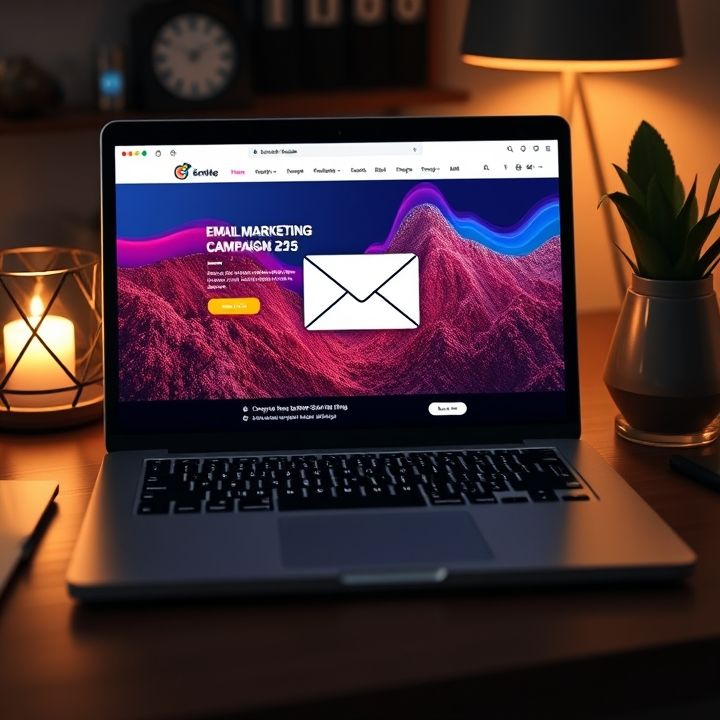Table of Contents
- Introduction
- Crafting Personalized Pre-Headers
- Utilizing Urgency and Scarcity
- Incorporating Emojis for Engagement
- Aligning Pre-Headers with Subject Lines
- Keeping Pre-Headers Short and Concise
- Testing Different Variations
- Highlighting Key Benefits or Offers
- Avoiding Spam Trigger Words
- Conclusion
- Frequently Asked Questions
Introduction
Is your email marketing campaign not getting the attention it deserves? Struggling with low open rates and uncertain how to capture your audience’s attention? You’re not alone. Today, we’re diving into the secret sauce of email marketing success—irresistible pre-headers that can skyrocket your email open rates.
Pre-headers are more than just an afterthought; they act as an extension of your subject line, offering a sneak peek into the value that lies within your email. When crafted strategically, pre-headers can significantly boost your email’s attractiveness, making it more likely to be opened and read. In this article, we’ll explore proven tactics to help you master the art of pre-header optimization. Below is a quick glance at what’s coming:
| Section | Key Takeaway |
|---|---|
| Understanding Pre-Headers | Learn the basics of effective pre-header creation |
| Proven Tactics | Discover actionable tips to enhance your pre-headers |
| Case Studies | See real-world examples of successful campaigns |
Get ready to unlock the secrets to captivating your audience from the moment your email hits their inbox. Let’s get started on this journey to email marketing excellence!
Crafting Personalized Pre-Headers
Crafting personalized pre-headers is a crucial tactic for optimizing email open rates. The pre-header text is the snippet that follows the subject line, providing additional context and enticing readers to click. Personalization starts with using recipient data to tailor the message. Including the recipient’s name or referencing past interactions makes the content feel more relevant. For example, ‘Hi [Name], don’t miss out on your exclusive offer!’ creates a sense of direct communication.
Another strategy is to align the pre-header with the subject line. If your subject line promises a discount, the pre-header should provide specifics, such as ‘Save 20% on your next purchase.’ Consistency between the two elements reinforces the email’s value proposition.
Utilizing A/B testing can also enhance pre-header effectiveness. By experimenting with different lengths, tones, and personalization techniques, you can identify what resonates most with your audience. Additionally, keeping the pre-header concise and to the point ensures it displays correctly across various email clients and devices.
Lastly, creating a sense of urgency or exclusivity can drive higher open rates. Phrases like ‘Limited time offer’ or ‘Only for our loyal customers’ create a fear of missing out, prompting immediate action. By combining these tactics, you can craft compelling pre-headers that significantly boost email engagement.
Utilizing Urgency and Scarcity
One effective tactic for optimizing email pre-header text to increase open rates is to utilize urgency and scarcity. Humans have a natural fear of missing out, and leveraging this psychological trigger can significantly boost email engagement. Crafting pre-header texts that convey a sense of urgency, such as ‘Last chance to save!’ or ‘Only a few hours left!’, can prompt recipients to act quickly. Similarly, emphasizing scarcity can generate interest and compel recipients to open the email. Phrases like ‘Limited stock available’ or ‘Exclusive offer for the first 100 subscribers’ create a sense of exclusivity and importance.
In addition, it’s crucial to ensure that the urgency and scarcity are genuine. Misleading recipients with false claims can damage your brand’s credibility and trust. Align the pre-header text with the content of the email to provide a seamless and trustworthy experience for the reader. Moreover, A/B testing different versions of pre-header texts can help determine which variations perform best with your audience. By analyzing the results, you can refine your approach and continuously improve your email marketing strategy.
Incorporating Emojis for Engagement
Incorporating emojis into your email pre-header text can significantly boost engagement and increase open rates. Emojis capture attention and convey emotions succinctly, making them a powerful tool for marketers. When used effectively, they can make your emails stand out in a crowded inbox and add a personal touch to your messaging.
One of the main advantages of using emojis is that they can quickly communicate the theme or sentiment of your email. For example, a 🎁 (gift emoji) can hint at a special offer or promotion, while a 💡 (light bulb emoji) can indicate innovative ideas or tips. However, it’s important to use relevant emojis that align with your brand image and message.
Another tip is to avoid overusing emojis, as this can come across as unprofessional and cluttered. Instead, strategically place one or two emojis to enhance your text. Testing different emojis and analyzing open rates can help determine which symbols resonate most with your audience. Always keep in mind cultural differences, as the meaning of certain emojis can vary globally.
Ultimately, emojis can add a dynamic element to your email pre-header text, making your communications more engaging and increasing the likelihood of your emails being opened.
Aligning Pre-Headers with Subject Lines
Aligning pre-headers with subject lines is a crucial tactic to increase email open rates. The pre-header text is an extension of the subject line; it provides additional context and piques the reader’s curiosity. To effectively align the two, ensure that the pre-header complements but does not duplicate the subject line. For instance, if your subject line is "Exclusive Offer Just for You," your pre-header could add, "Save 20% on your next purchase." This combination creates a compelling reason for the recipient to open the email.
Consistency in tone and messaging between the subject line and pre-header is also essential. If your subject line is playful, the pre-header should match that tone to maintain coherence. Additionally, keep the pre-header concise and to the point, ideally under 100 characters, so it displays well across various email clients. By aligning your pre-header with your subject line, you not only provide a seamless reader experience but also significantly boost your email open rates.
Keeping Pre-Headers Short and Concise
One effective tactic for optimizing email pre-header text to increase open rates is to keep it short and concise. A pre-header should act as a preview of the email content, enticing the recipient to open it. Ideally, it should complement the subject line and provide additional context or an added incentive. Given that many email clients have character limits for pre-header text, aiming for around 40-70 characters is often most effective. By being brief and to the point, you ensure that the key message is visible even on mobile devices where screen space is limited. Additionally, concise pre-headers can create a sense of urgency or curiosity, prompting the reader to click through to learn more. It’s also important to avoid redundant information; instead, focus on delivering a unique value proposition. Testing different variations of short, concise pre-headers can also provide insights into what resonates best with your audience.
Testing Different Variations
Testing different variations of email pre-header text is crucial for optimizing open rates. By experimenting with various lengths, tones, and content types, you can identify what resonates best with your audience. Start by creating several versions of the pre-header text, each with a unique approach. For instance, one version might include a personal touch, another might highlight an exclusive offer, while a third could use a sense of urgency.
Next, employ A/B testing to evaluate the performance of each variation. Send different pre-header texts to segmented portions of your email list and measure the open rates. This method allows you to make data-driven decisions about which style is most effective. Keep in mind that audience preferences may change over time, so continuous testing is important.
Additionally, analyze the context and content of your email. The pre-header should complement the subject line and give readers a clear idea of what to expect. Align the tone and message of the pre-header with the overall email campaign to ensure consistency. By testing different variations and refining your approach, you can significantly enhance email open rates and engagement.
Highlighting Key Benefits or Offers
When it comes to optimizing email pre-header text to increase open rates, one effective strategy is highlighting key benefits or offers. The pre-header text serves as an extension of your subject line, offering additional context and enticing recipients to open the email. By clearly stating a compelling benefit or exclusive offer, you can capture the reader’s attention right from their inbox. For instance, mentioning discounts, special promotions, or limited-time offers can create a sense of urgency that encourages immediate action. Additionally, focusing on the value the recipient will gain—such as ‘Unlock 20% Off Your Next Purchase’ or ‘Get Early Access to Our New Collection’—can make your email stand out among countless others.
It’s important to keep the pre-header text concise and relevant, as mobile devices often display a limited number of characters. Tailoring your message to address the specific needs or interests of your target audience can further increase the chances of your email being opened. By leveraging the pre-header space to highlight key benefits, you not only pique curiosity but also convey a clear, value-driven reason for recipients to engage with your content.
Avoiding Spam Trigger Words
Avoiding spam trigger words is essential for optimizing email pre-header text and increasing open rates. Spam filters are designed to catch emails that contain certain words or phrases commonly associated with unsolicited emails. To ensure your email reaches the recipient’s inbox, it is important to steer clear of these triggers.
Words like ‘free,’ ‘guarantee,’ ‘win,’ and ‘exclusive offer’ are often flagged by spam filters. Instead, opt for language that is clear, concise, and relevant to your audience. Using personalized content and addressing the recipient by name can also help in making the email appear more genuine and less like spam.
Additionally, avoid using excessive punctuation, all caps, and symbols in your pre-header text. These can also trigger spam filters and decrease your email’s chances of being opened. Instead, focus on delivering value and piquing the recipient’s curiosity with a compelling and honest pre-header text.
By avoiding spam trigger words and using thoughtful, targeted language, you can significantly improve your email open rates and ensure that your message reaches its intended audience.
Conclusion
In conclusion, mastering the art of crafting irresistible pre-headers can truly skyrocket your email open rates. From personalization and strategic alignment with subject lines to leveraging urgency, scarcity, and emojis, each tactic brings its unique value to the table. Testing different variations and focusing on key benefits or offers further fine-tune your approach, ensuring you deliver the most compelling message to your audience. Remember to keep your pre-headers short yet impactful and avoid using spam trigger words to maintain credibility and trust. By incorporating these proven tactics, you can significantly enhance your email marketing strategy, boost engagement, and ultimately drive better results for your campaigns.

